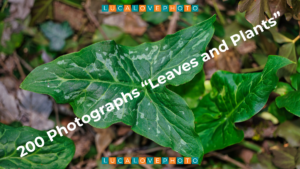Hallo everyone, and welcome back to my site. Thanks to those who have the patience to follow my posts. A warm welcome to those who are here for the first time. Focus of this post: Timeless Landscapes with Vintage.
Timeless Landscapes with Vintage lenses
Vintage lenses offer unique characteristics, adding magic to landscape photos. Produced before the ’90s, they provide distinctive colors and softness. Their unique optical properties can give a nostalgic feel to images, enhancing the overall aesthetic of landscape photography.
Features of Vintage Lenses
- Color Rendering and Contrast:
- Vintage lenses have softer color rendering and less contrast. This creates dreamy, nostalgic images with a unique look.
- Their less advanced anti-reflective coating can cause flare and ghosting. This can be creatively exploited in your photography.
- The color tones produced by vintage lenses often appear warmer and more organic, contributing to an atmospheric quality in photos.
- Optical Aberrations:
- Chromatic and spherical aberrations are more evident, adding unique character to images.
- The bokeh is often softer and “creamier,” highlighting foreground subjects effectively.
- These lenses can create interesting light streaks and halos, adding an artistic touch to landscape photography.
- Some vintage lenses exhibit unique distortion patterns, which can add a creative element to wide-angle landscape shots.
- Construction and Materials:
- Vintage lenses are robust, often made from high-quality metal materials.
- They tend to be heavier than modern lenses, which is a consideration for photographers.
- The solid construction contributes to the durability and longevity of vintage lenses, making them reliable tools for photography.
- Many vintage lenses have smooth, precise focusing rings, offering better control for manual focusing.
Techniques and Tips to obtain Timeless Landscapes with Vintage
- Adapters for Digital Cameras:
- Use adapters to fit vintage lenses on modern digital cameras. Quality adapters maintain focus accuracy and minimize internal reflections.
- Choose a good adapter for optimal results.
- Some adapters also offer additional features, like focusing confirmation chips, which can be helpful for manual lenses.
- Manual Focusing:
- Most vintage lenses require manual focus, advantageous in landscape photography where you have time to compose carefully.
- Use focus peaking on your digital camera to aid manual focusing.
- Practice focusing with different aperture settings to understand the depth of field characteristics of each lens.
- Using a tripod can aid in achieving precise focus, especially in low light or with smaller apertures.
- Camera Settings:
- Shoot in manual or aperture priority mode for full exposure control.
- Slightly underexpose to preserve highlight details, especially with flare-prone lenses.
- Experiment with different white balance settings to complement the warm tones of vintage lenses.
- Bracketing your exposures can help capture the full dynamic range of a scene, which is especially useful in landscape photography.
- Creative Exploration:
- Experiment with various lighting conditions to see how the lens interacts with direct sunlight, shadows, and twilight.
- Utilize lens aberrations and defects for unique visual effects.
- Incorporate foreground elements to take advantage of the distinctive bokeh and depth of field effects of vintage lenses.
- Try long exposure techniques with vintage lenses to capture motion in landscapes, such as moving water or clouds.
Popular Vintage Lenses for Landscape Photography
- Carl Zeiss Jena Flektogon 35mm F/2.4:
- A well-loved wide-angle lens for its sharpness and color rendering.
- Great for capturing vast landscapes with pleasing bokeh.
- Its close focusing capability makes it versatile for both wide vistas and detailed close-ups.
- Helios 44-2 58mm F/2:
- Known for its characteristic swirly bokeh and soft color rendering.
- Ideal for landscapes emphasizing a foreground subject.
- This lens can create a dreamy, ethereal effect, particularly in scenes with intricate details and textures.
- Pentax Super-Takumar 50mm F/1.4:
- Famous for its sharpness and creamy bokeh.
- Excellent for landscapes with a shallow depth of field.
- Its fast aperture makes it suitable for low-light landscape photography, such as twilight or dawn scenes.
Maintenance and Care for Vintage Lenses
- Cleaning:
- Use an air blower to remove dust and particles.
- Clean lenses with microfiber cloths and appropriate solutions to avoid scratches.
- Regularly check for and clean any fungus or mold, as vintage lenses are more prone to these issues.
- Storage:
- Store lenses in cool, dry places to prevent mold and fungus.
- Use caps and protective cases to avoid physical damage.
- Consider using silica gel packets in your storage case to control humidity and prevent moisture damage.
- Restoration:
- Take deteriorating lenses to professionals for thorough cleaning and maintenance.
- Many vintage lenses can be repaired and restored, maintaining their value and functionality.
- Replace any worn or damaged parts, such as focusing rings or aperture blades, to ensure optimal performance.
Conclusion
Vintage lenses can transform landscape photography, adding unique character and timeless charm. Experiment with different lenses and techniques to enhance your artistic vision. Proper care ensures vintage lenses provide extraordinary images for years. Embrace the quirks and imperfections of vintage lenses to create truly unique and memorable landscape photographs.
I hope that these short notes can be of some practical and/or cognitive help.
We’ll read about it in the next post.




